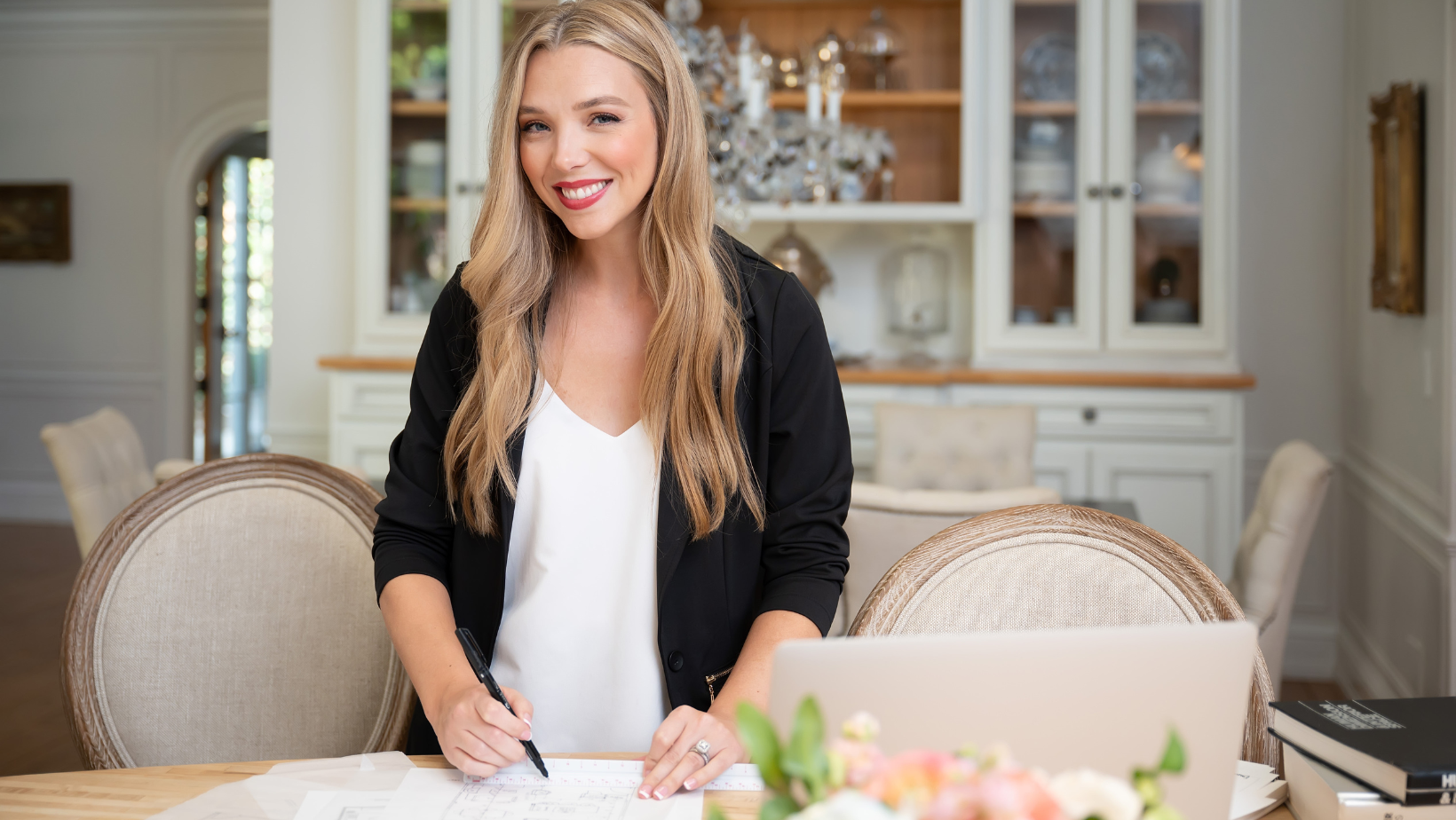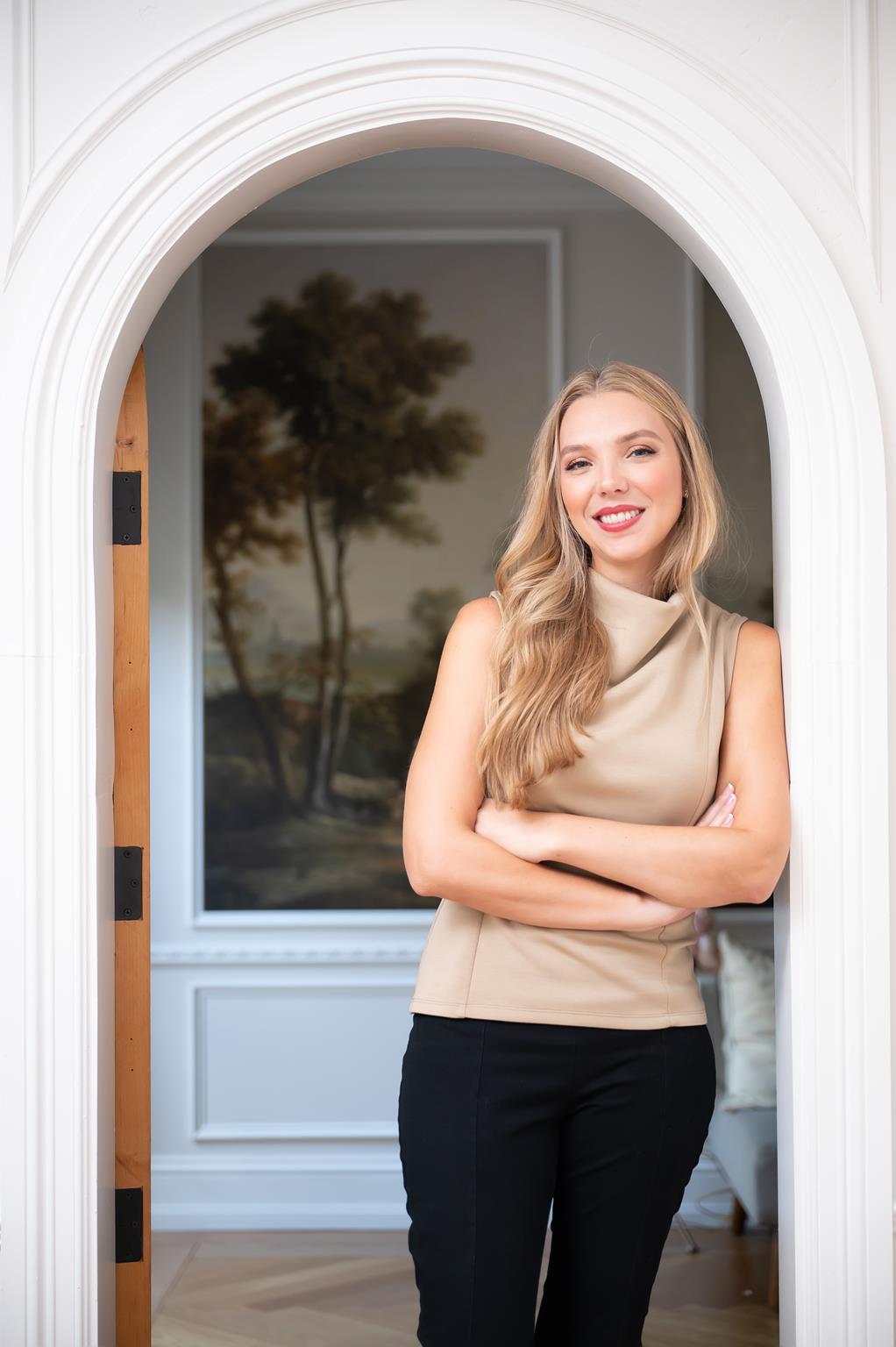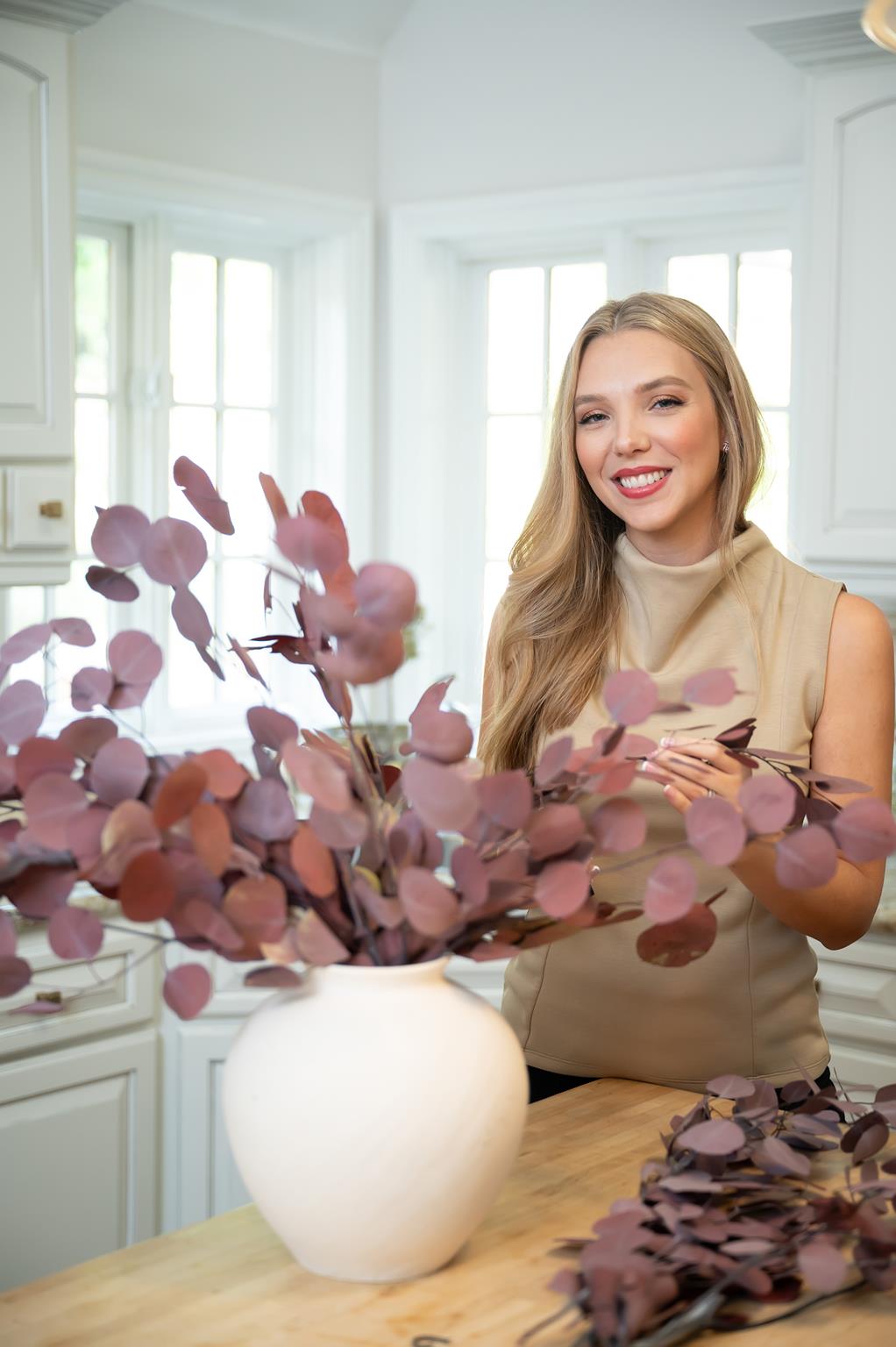
Julie Jones, a virtual interior designer and pioneer in space planning, has gained over 1 million followers on social media by launching her innovative business, Julie Jones Home. With a personalized and cutting-edge approach, Julie offers accessible and immersive design solutions to clients around the world, combining her experience in architecture with the latest technologies to transform spaces in a creative and functional way.
You started by offering free advice on social media to help people transform their spaces without high costs. What was it like to realize that this initiative would grow and become a reference in virtual interior design?
My business being a reference for virtual design is news to me. It all started so organically it’s hard to think of it being a reference for an industry. Some people, when they hear “virtual interior design”, may think it lacks personalization. So I hope, if anything, people can reference that. Don’t lose the personal aspect of interior design, even though you have a computer screen in between you and your client.
The pandemic brought many challenges but also opened new possibilities, like the virtual design approach that you’ve mastered. What were the biggest lessons you learned by combining technology and creativity in this format?
The biggest lesson by far would be learning the power of social media. Telling a story—your story, your client’s story, or a product’s story—is a tangible and organic way to build a social media following. When you are vulnerable and transparent, showing the how and why behind something and its importance, you will gain an audience. People want to learn something, be helped, or entertained. If you can combine all 3, you have the attention of a broader audience and potential clients. I had to combine my skill, technology, and creativity to come up with a format for social media that combines those 3 keys to audience retention and therefore clients.
Your new business, Julie Jones Home, brings together custom furniture, trends, and an immersive experience. What do you think attracts your clients and followers the most to this unique approach?
I think it’s a much less stressful and easier way to have a professional source and design your home. We source hundreds of decor and furniture products daily. If we are able to source from our own warehouse and vouch for the quality, it’s a win-win for the clients and our designers. We hope the customization, quality, and transparency is what is attractive to our clients.

You use 3D modeling and augmented reality to create incredible projects. How have these technological tools transformed the way you envision and execute interior design?
Other than our exterior services, we actually don’t use 3D software for our interiors. This doesn’t mean we won’t ever, but for now it works very well to be able to use photoshop and CAD for our floor plans and visuals. We find it fits best for our business model to use software that enables us to adjust and edit a photograph, rather than building that room in 3D. Our visuals showcase the real products we are sourcing, not a representation of them. It is also a photo of the client’s actual room, not a rendered image. While Photoshop isn’t commonly used in interior design in this way, I hope to change that and show the industry the value it can bring us and our visuals. It is the main reason why I teach photoshop classes on my website. To help other designers learn how to use this very useful and inexpensive program.
Your work balances functionality and elegance, but you are also known for your visionary perspective. Which current design trends do you believe will continue to shape the way we live in the coming years?
The advancements in technology are a good way to see the change in how we can function in a space. For example, the time people spend in front of a tv is significantly less now that everyone consumes more and more content from their phone. Not only technology advancements, but product advancements can change an industry. Vinyl plank flooring and quartz countertops are examples of how an industry can shift in product supply. I see porcelain doing it now. We have porcelain slab countertops and large porcelain pavers you can drive a car over. The pros of porcelain slab are very attractive to a lot of homeowners to swap their stone or quartz countertops for. The trends I’ve seen in my career tend to follow new tech and new products on the market.
You’ve worked with clients worldwide, from countries like Canada, Australia, and the Middle East. What is it like adapting your style to different cultures and preferences while maintaining your identity as a designer?
My identity as a designer does not matter when it comes to my clients. As long as it is a safe and functional environment, everything else is a personal preference. I’m not there to leave an impression of myself in my clients’ homes, I’m there to showcase their taste and style in the best way possible. You can still appreciate and create a beautiful space without your personal aesthetic on display. This is what brings you clients and repeat clients as a designer in the real world, because they trust that you will do what is best for them.

Your background in interior architecture and passion for functionality are reflected in everything you create. How do you envision personalized interior design evolving in the coming years with technological advancements and changing client needs?
I’ve heard many people say AI will take my job, but I believe AI will assist my job much like other careers. I don’t think it will replace it because this field has a personal and relational aspect. I’m excited to see the technological advancements in home building and design. As I mentioned earlier, that new tech and trends follow each other in this field. “Trends” can also be client’s needs or wishes. I do think we will see a lot more of AI in the design field, but I would like to embrace it rather than run from it. If it can make our job more efficient and save time, then that is a good thing.


